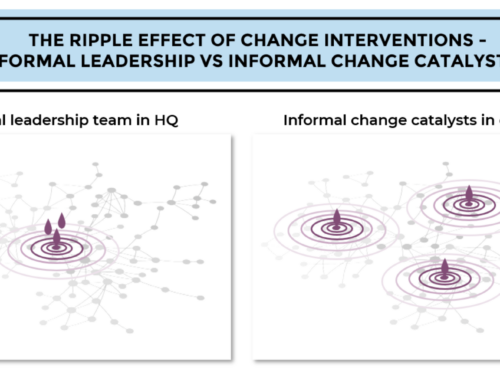BUILD CULTURE
A Culture Comeback?
July 4th, 2024 | Build culture

I’m not sure if it is just me, but as of late it feels as if there has been a surge in company-wide culture programs; it got me thinking about the forces driving this trend. It’s like the corporate world collectively decided that fostering a feel-good, inclusive, and vibrant workplace is the “next big thing.”
It feels like not too long ago, whenever you’d open LinkedIn or any business article, you’d see the announcement of yet another mass layoff, or forced return to work mandate. Are these initiatives a response to the sweeping changes in our work lives, or are they a genuine effort to create more connected and meaningful workplaces? But as we sift through this trend, it’s worth asking: Are these initiatives a genuine attempt to create a better workplace, or are they just a shiny distraction from deeper issues?
Let’s take a step back and explore this phenomenon that seems to be shaping the new era of work.
The (Seemingly Ever-)Changing Landscape
While I’m sure we’re all a bit sick of discussing COVID-19’s impact on work, I’d be remiss if I didn’t discuss the legacy for many workers. A decade ago, a mandatory remote work policy would have seemed like a distant possibility. The pandemic turned that on its head when our kitchens became our offices, we could only connect with colleagues through a screen, and daily commutes shrunk from 45 minutes to 1 minute from bed to (makeshift) desk. The shift was dramatic, and it left many of us feeling disconnected from the traditional work environment (hyperlink to culture article 1).
The wave of mass exoduses over the past couple of years, coined as the Great Resignation, has forced companies to rethink their approach to employee engagement and retention.
The Great Resignation didn’t just happen out of nowhere. People left because they were done with toxic workplaces, the lack of support, and the realization that life was too short to spend in a job that wasn’t fulfilling or caused too much stress. For a time, it felt as if the power was in the hands of the people…
This recent surge in culture programs is almost like a knee-jerk reaction to the upheaval of the past few years. It’s as if organizations are saying,
“Hey, we know things have been tough. Sorry that we forced you back to coming into the office five days a week after requiring a work-from-home set-up because of the pandemic. We know we fired a bunch of your colleagues and left you with the extra work, but look! We’re trying now and investing in culture…so everything’s okay, right?”
These new culture programs are a key strategy in this effort, as companies strive to create a work environment that both attracts and retains talent. However, wasn’t maintaining culture cited as a major reason that employees must return to the office five days a week? It’s quite strange that these Return-to-Office demands are now accompanied by cultural programs as if retroactively justifying the need to return with promises of a “great culture.” Perhaps they’ve only now realized that the post-pandemic office environment isn’t as enticing to employees as they thought…
The Cynical Observation
It is hard to ignore the timing of these culture programs. With the aftermath of mass layoffs, the challenges of the Great Resignation, and the ongoing return-to-office mandates/debates, it feels a bit like companies are scrambling to patch things up. The cynic in me wonders if these initiatives are more about optics than actual change. It’s almost like a collective whiplash as organizations swing from the chaos of mass layoffs and the remote work revolution to a new focus on creating a feel-good office culture.
Does the timing seem a bit too convenient? As if these initiatives are a desperate attempt to mend the cracks caused by a few years of upheaval? Are these efforts genuine, or are they merely a band-aid for deeper issues?
It’s easy to feel skeptical that many of the culture programs popping up everywhere are less of a natural evolution and more of an attempt to stitch together a workplace that’s frayed at the edges. It can appear that many companies are scrambling to piece together an engaging culture to win back trust and loyalty that were shattered by layoffs, fear of the role of AI replacing humans, and a lack of meaningful connections in a virtual space. That being said…
Ok, But It’s Not All Bad…
As with most things in life, the truth probably lies somewhere in the middle. There are undoubtedly companies that are genuinely committed to creating a positive, supportive culture, and their initiatives reflect a real effort to improve the workplace. These programs have the potential to make a meaningful impact, fostering a more inclusive, engaging, and supportive work environment.
These initiatives, if done well, have the potential to create a more inclusive, supportive, and engaging work environment. They offer a chance to redefine what it means to be part of a company and to create a workplace where everyone can thrive. Especially when organizations involve their people in every facet of these culture programs. There is not a one-size-fits-all approach to “fix” your culture. When organizations change with their people, meeting the unique needs and preferences of that workplace, it can lead to impactful and sustaining change.
Of course, there’s still a lot of work to be done, and at the end of the day, it’s about more than wellness days and pro-business social media campaigns; it’s about creating a workplace where we all feel a sense of purpose and belonging. Hopefully, organizations will put their money where their mouth is and invest in sustainable culture initiatives, instead of fading their efforts when the next buzzy thing comes along!
BUILD CULTURE
A Culture Comeback?
July 4th, 2024 | Build culture

I’m not sure if it is just me, but as of late it feels as if there has been a surge in company-wide culture programs; it got me thinking about the forces driving this trend. It’s like the corporate world collectively decided that fostering a feel-good, inclusive, and vibrant workplace is the “next big thing.”
It feels like not too long ago, whenever you’d open LinkedIn or any business article, you’d see the announcement of yet another mass layoff, or forced return to work mandate. Are these initiatives a response to the sweeping changes in our work lives, or are they a genuine effort to create more connected and meaningful workplaces? But as we sift through this trend, it’s worth asking: Are these initiatives a genuine attempt to create a better workplace, or are they just a shiny distraction from deeper issues?
Let’s take a step back and explore this phenomenon that seems to be shaping the new era of work.
The (Seemingly Ever-)Changing Landscape
While I’m sure we’re all a bit sick of discussing COVID-19’s impact on work, I’d be remiss if I didn’t discuss the legacy for many workers. A decade ago, a mandatory remote work policy would have seemed like a distant possibility. The pandemic turned that on its head when our kitchens became our offices, we could only connect with colleagues through a screen, and daily commutes shrunk from 45 minutes to 1 minute from bed to (makeshift) desk. The shift was dramatic, and it left many of us feeling disconnected from the traditional work environment (hyperlink to culture article 1).
The wave of mass exoduses over the past couple of years, coined as the Great Resignation, has forced companies to rethink their approach to employee engagement and retention.
The Great Resignation didn’t just happen out of nowhere. People left because they were done with toxic workplaces, the lack of support, and the realization that life was too short to spend in a job that wasn’t fulfilling or caused too much stress. For a time, it felt as if the power was in the hands of the people…
This recent surge in culture programs is almost like a knee-jerk reaction to the upheaval of the past few years. It’s as if organizations are saying,
“Hey, we know things have been tough. Sorry that we forced you back to coming into the office five days a week after requiring a work-from-home set-up because of the pandemic. We know we fired a bunch of your colleagues and left you with the extra work, but look! We’re trying now and investing in culture…so everything’s okay, right?”
These new culture programs are a key strategy in this effort, as companies strive to create a work environment that both attracts and retains talent. However, wasn’t maintaining culture cited as a major reason that employees must return to the office five days a week? It’s quite strange that these Return-to-Office demands are now accompanied by cultural programs as if retroactively justifying the need to return with promises of a “great culture.” Perhaps they’ve only now realized that the post-pandemic office environment isn’t as enticing to employees as they thought…
The Cynical Observation
It is hard to ignore the timing of these culture programs. With the aftermath of mass layoffs, the challenges of the Great Resignation, and the ongoing return-to-office mandates/debates, it feels a bit like companies are scrambling to patch things up. The cynic in me wonders if these initiatives are more about optics than actual change. It’s almost like a collective whiplash as organizations swing from the chaos of mass layoffs and the remote work revolution to a new focus on creating a feel-good office culture.
Does the timing seem a bit too convenient? As if these initiatives are a desperate attempt to mend the cracks caused by a few years of upheaval? Are these efforts genuine, or are they merely a band-aid for deeper issues?
It’s easy to feel skeptical that many of the culture programs popping up everywhere are less of a natural evolution and more of an attempt to stitch together a workplace that’s frayed at the edges. It can appear that many companies are scrambling to piece together an engaging culture to win back trust and loyalty that were shattered by layoffs, fear of the role of AI replacing humans, and a lack of meaningful connections in a virtual space. That being said…
Ok, But It’s Not All Bad…
As with most things in life, the truth probably lies somewhere in the middle. There are undoubtedly companies that are genuinely committed to creating a positive, supportive culture, and their initiatives reflect a real effort to improve the workplace. These programs have the potential to make a meaningful impact, fostering a more inclusive, engaging, and supportive work environment.
These initiatives, if done well, have the potential to create a more inclusive, supportive, and engaging work environment. They offer a chance to redefine what it means to be part of a company and to create a workplace where everyone can thrive. Especially when organizations involve their people in every facet of these culture programs. There is not a one-size-fits-all approach to “fix” your culture. When organizations change with their people, meeting the unique needs and preferences of that workplace, it can lead to impactful and sustaining change.
Of course, there’s still a lot of work to be done, and at the end of the day, it’s about more than wellness days and pro-business social media campaigns; it’s about creating a workplace where we all feel a sense of purpose and belonging. Hopefully, organizations will put their money where their mouth is and invest in sustainable culture initiatives, instead of fading their efforts when the next buzzy thing comes along!
Related articles
Share article
Share article









